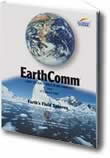This investigation will help you to:
- El Nino and non-El Nino Conditions
- The Southern Oscillation
- The Equatorial Pacific and El Nino
- Cause and Effect - El Nino
- To learn more about the technology used to study oceanic-atmospheric interactions, specifcally TOPEX/Poseidon and TAO, visit the following web sites:
- To learn more about La Nina, visit the following web sites:
- "El Nino Theme Page" - TOGA - TAO, NOAA
Page contains links to cover a wide range of topics, including definitions of El Nino and La Nina, impacts of El Nino, predicting El Nino, 3-D animations of El Nino temperatures, and information on finding El Nino data. - El Niño and Climate Prediction - NOAA
Online article explains how to use the Internet to research El Nino. Includes multiple links on El Nino. - "NOAA El Nino Page"
Site contains an image of current sea-surface temperature anomalies which is updated regularly. Site also contains links to El Nino images and information, including a list of El Nino-related web sites.
- "El Nino/La Nina Home" - NOAA Climate Prediction Center
Includes links to information on ENSO forecasts, an "expert assessment" (updated weekly), ENSO figures (updated weekly), and a list of FAQ. Also includes an online tutorial which contains numerous color images. - "CDC's El Nino/Southern Oscillation (ENSO) Information" - NOAA/CIRES Climate Diagnostics Center
This site links to information on the science behind ENSO, current ocean/atmosphere conditions, impacts of ENSO on climate, forecasts, current research, and links to educational resources.
- El Nino Watch - NASA
Find images of the Pacific from space (including sea surface images, water vapor, SST anomalies, surface winds, El Nino animations), an ENSO "primer" (a thorough review of ENSO, presented in audiovisual format with color images and text), links to related NASA research projects, and more. - "TOGA-TAO and the 1991-93 El Nino-Southern Oscillation Event" - McPhaden, M.J., NOAA/PMEL
Online article examines data collected by the TOGA-TAO program. Includes color data images.
- "USGS New and Information on El Nino" - USGS
This site focuses on the impacts of El Nino, including coastal erosion, flooding, landslides, storms, and climate change. Click on link to open the article of interest. - "List of Impacts and Prediction Benefits" - PMEL (NOAA)
Click on link to find further information on the impacts of El Nino, such as El Nino and tornado occurances, El Nino and hurricane frequency, coral reef bleaching, El Nino and marine fish and birds, and more. - "El Nino Sea-Level Rise Wreaks Havoc in California's San Fransico Bay Region" - USGS Fact Sheet 175-99
Online fact sheet (can also be downloaded and printed in PDF format) looks at the impact of the 1997-1998 El Nino event on the Bay area. Site includes damage photos, sea level data, upwelling images, and an explanation of Kelvin waves and their impact. - "El Nino Storms Erode Beaches on Monterey Bay, California" - USGS Fact Sheet 026-00
Two-page fact sheet reviews the relationship between El Nino and coastal erosion on Monterey Bay, California. Includes color images.
To learn more about the technology used to study oceanic-atmospheric interactions, specifcally TOPEX/Poseidon and TAO, visit the following web sites:
- NASA's TOPEX/POSEIDON
- TOPEX/POSEIDON - University of Texas at Austion, Center for Space Research
- TAO Project - NOAA's Pacific Marine Environmental Laboratory
- "La Nina Page" - NOAA
Includes links to general La Nina information, such as climate data for past La Nina events, forecasts, and the impacts of La Nina. - "What is La Nina?" - NOAA Pacific Marine Environmental Laboratory
Site includes color animations comparing La Nina, El Nino, and "normal" conditions, a review of the impacts that La Nina has had on the global climate, and links to further information. - "El Nino/La Nina Home" - NOAA Climate Prediction Center
Includes links to information on ENSO forecasts, an "expert assessment" (updated weekly), ENSO figures (updated weekly), and a list of FAQ. Also includes an online tutorial which contains numerous color images.

